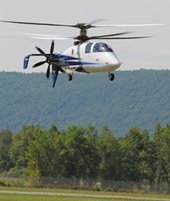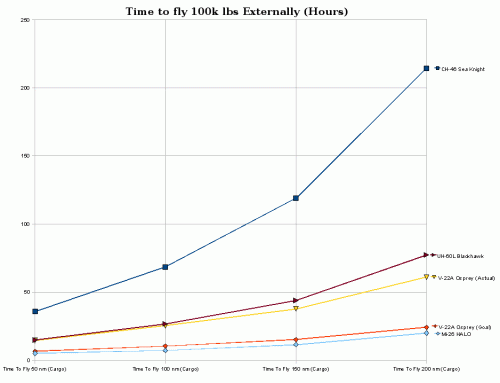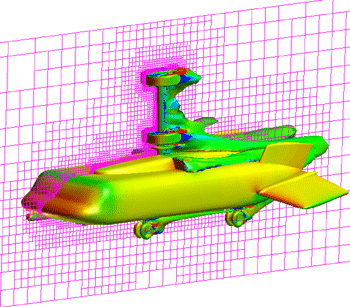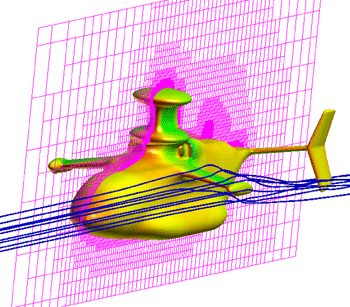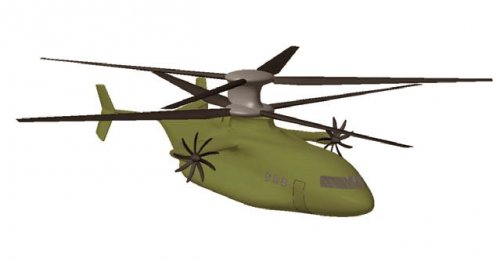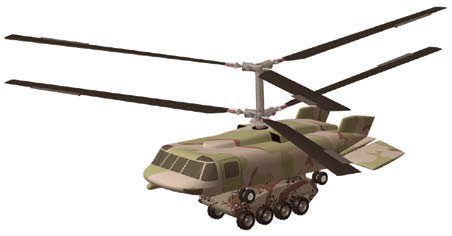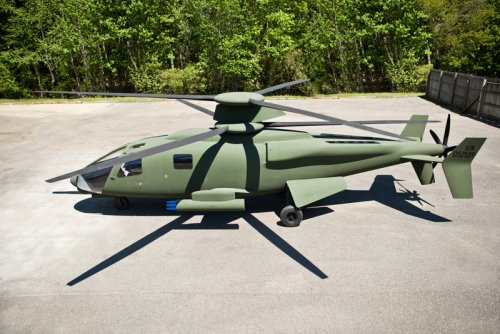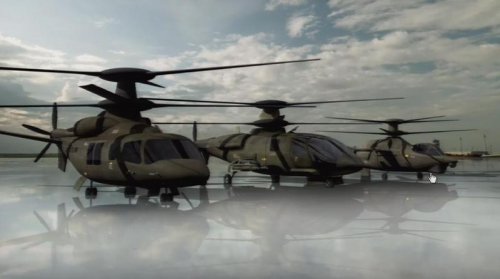RyanCrierie said:
yasotay said:
Question for you. If speed is not so important... why is virtually every design house around the world working on high speed rotorcraft?
Because Tilt-rotor has not proven itself worthy of the enormous amount of time and money poured into it at the behest of the US Marine Corps. So something has to fill the role; hence the increased interest in compound helicopters like the X2 or X-49A.
With a Compound Helo, you can get 83% of the speed of a V-22A for 30% of the cost. And there are a lot of creaky old helicopters that must be replaced. For $5 billion, you get either 50 V-22As or 160~ Compound Helos.
For special ops missions, the V-22A does make a good slot-in as a replacement for the MH-53; since you will not be flying external slung loads usually, and for special ops birds, price is not an object.
Well, Lessee here, let's combine up a few posts
A couple o' days ago you said a compound had 75% of the speed of a Tilt-Rotor, now it's up to 83%, must have been a breakthrough yesterday that didn't make the news.
Regarding the speed, I've never seen a requirement for the V-22 to cruise @ 300 knots, so I don't think anyone's too worried that it can't. It actually has demonstrated that it exceeds the cruise speed requirement (sustained 275 knots, promise was 250, original requirement was lower than that)
Regarding external loads, for the last 10 years V-22 has consistently demonstrated the ability to carry 10,000 lbs. externally at up to 220 knots sustained. Problem is, while that does wonders for the V-22, it isn't too good for a lot of equipment carried externally (How do you quickly secure something for a 407 km/h wind? By the time you set all that up, you've lost the advantage of going that fast). Yes, it's true that a V-22 can only hit its maximum cruise with an internal load, but isn't that kinda true for any rotorcraft? This seems a bit of spin. Some rotorcraft don't travel all that much faster "clean" than they do "dirty", but that clean speed is way lower than that a Tilt-Rotor's.
A V-22's flyaway cost is no more $100 million than a UH-60's is $6 million. Yes, we spent way more than we should have on the V-22. One of the reasons was that the difficulty in scaling up from an XV-15 sized vehicle involved greater difficulty than expected. You get new technology, you learn. I suspect we might find the same thing if we try and scale up from an XH-59/X2 size vehicle as well. Another big contributing factor was the cancellation of the V-22 by Dick Cheney during the reign of Bush the Elder followed by the deliberate stretch-out during the reign of Clinton the Triangulator. You stretch something out, it
always costs more.
I've never understood why compound helo proponents always seem to resent and attack Tilt-Rotor as if they were mutually exclusive. "If only we had gotten all that money...". One tends to forget why Tilt-Rotor got all that money. Basically, the XV-15 demonstrated more capability and promise on a shoestring budget than all of compound research combined. No one stopped a compound from being considered for JVX except that no one had enough confidence to bid one. Even today, X2 is moving at a snail pace. It's flown (yay!), but only a little bit and as I posted earlier, that first flight date may have been some misdirection about the first flight date to focus attention away from how late it was. The X-49 also promises a lot (although it seems the idea there is to increase the speed of existing designs than with the much more expensive idea of a fresh design), but after all the time invested so far, has it yet demonstrated sustained cruise higher than that of a regular clean H-60? Will it match the hover efficiency of the H-60? Compound helicopter publicity is telling us, "This is what we'll get with these technologies", and maybe we will, but as yet none of it has actually been demonstrated.
Although I am a fan of Tilt-Rotor, I see no need to denigrate other concepts (except X-Wing). Personally I, like most Tilt-Rotor proponents, hope that compound helicopters can deliver on the promise its adherents wish for. The more choices in technology, the better. I suspect compounds, if they ever come through, can offer real advances in the smaller sizes and high percentage very slow speed missions in civil roles. A 220 knot cruise S-76 class vehicle would go a long way towards moving the initiative in rotorcraft design back towards this side of the Atlantic,
if it works. I am looking forward to advances in this field, but given the glacial speed of modern development I am putting my money for the near term on what has proven to work. I am keeping my fingers crossed for other alternatives.

